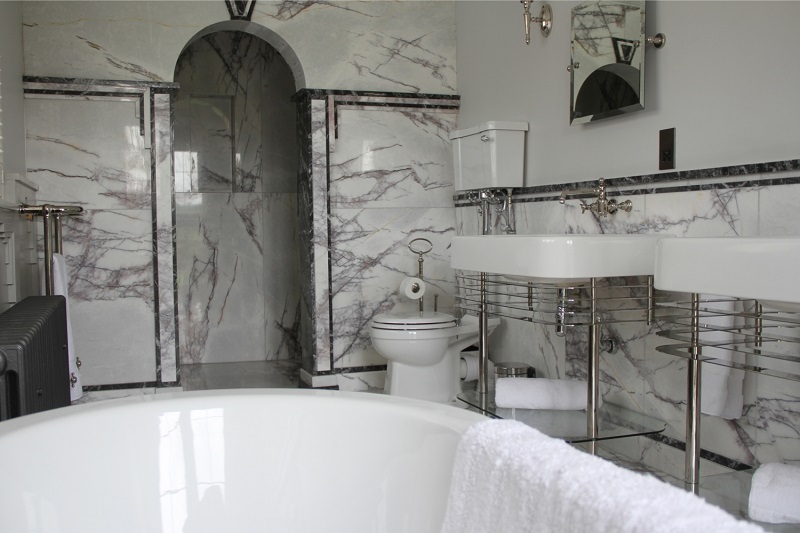

Most of today’s high end new builds require stone or porcelain for some of the design. Stone is highly desirable in world leading front of house and commercial developments, whilst porcelain is a very popular equivalent and is found in both commercial and residential buildings. Both require attention to detail to avoid making potentially expensive ordering mistakes.
Here are a few of the most common ones:
Cutting costs is always a false economy, especially when it comes to quality materials. The biggest mistake that people make with porcelain tiles and stone is ordering them in bulk from overseas companies. The result is often warped or cracked tiles, haphazard printing, and uneven sizes. The problems can be fixed, but the variable of time is added into the mix, making project planning difficult.
Everyone has their speciality. Good interior design skills are fairly rare and are a niche art. New builds need to be neutral, but that does not mean they have to lack personality. The art of excellent porcelain tile design means working with the light and the space, so the perfect tile for one property will not be right for another. When choosing your supplier, find one that has genuine enthusiasm for their role, and who can offer advice and guidance throughout the process.
Stone and porcelain tile suppliers do keep stock that can be shipped out on demand. However, proper planning is the best way to ensure that sizing is correct and that details – such as finish, slip-resistance, and thickness – are fully taken care of. The type of tile you order will also influence factors such as the type of vehicle used to transport the product. This means that logistics are more accurate when planned in advance.
Due to the high quality of porcelain manufacturing, there is significant overlap between porcelain tile and stone. Often, clients do not notice the difference. As such, there is a fair amount of boundary blurring. Porcelain tiles are lightweight, heat resistant, and water resistant. This makes them ideal for walls and floors, and there can also be significant cost savings compared to only using stone. Deciding whether to opt for natural stone or porcelain is an important part of any project, and it is worth looking at multiple options and visiting a showroom.
We live in a trigger-happy Internet world where everything can be ordered without much thought. This is a bad idea when it comes to porcelain tiles and natural stone. The best way to get the most out of the product is to talk to an expert. Discussing project plans with a supplier will mean better size planning, and a more satisfactory end result. It also gives you an opportunity to talk through the details with a specialist, who can advise on the best solutions for your new build installation needs.
There is no need for mishaps when working with an experienced stone and porcelain supplier. For help or advice, get in touch with one of our stone and porcelain specialists today.